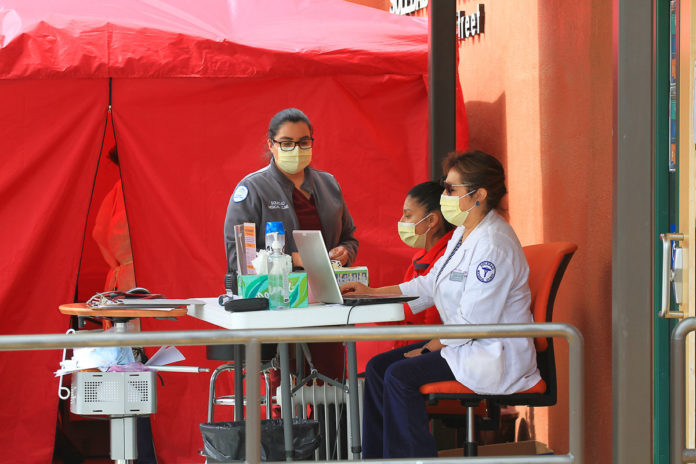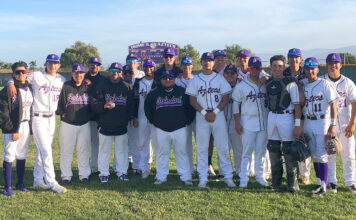SOLEDAD — The past two weeks of new screening procedures at Soledad Medical Clinic have been accompanied by the presence of an isolation tent outside the entrance due to the continuing threat of the novel coronavirus (COVID-19).
“What we’re trying to do is not mix sick and healthy populations,” said Cassie Russo, director of clinic operations.
The clinic has no isolation rooms, so the tent is a place to check the health of individuals after being asked about respiratory symptoms, fever, shortness of breath, coughing, travel or contact with possibly infected individuals.
“We’re asking those questions just to keep people out of the building because once they get into the building, they are then exposing the healthcare workers and other patients,” Russo said.
The new screening process has also come along with lines outside the clinic door, but not all of them are merely waiting their turns to answer questions or go to the tent. Rather, the clinic has limited the number of people who can be inside the waiting room.
In order to ease these lines and meet the demands of the community, the clinic has expanded hours to operate on Saturdays.
“If it’s a family of five, we’re only seeing one patient at a time,” Russo said. “You can’t bring your cousins and everybody with you to your appointment.”
Regarding individuals who believe they need to be tested, Russo reminded that there is an area shortage of tests, which means facilities can’t swab everybody.
In addition, tests collected in Soledad must travel to the eastern side of the country, which has a seven- to eight-day turnout. This differs from larger hospitals with rapid tests that can give results within 24 hours, or ones that offer drive-through testing.
“We’re not equipped to deal with that here,” Russo said.
The clinic is also experiencing vendor shortages of protective equipment, such as masks, gloves, gowns, face shields and goggles. If community members are able to help with donations, the clinic is accepting them.
Lack of information among the community is another struggle for the clinic.
“What’s really hard for us to manage is educating people and making them aware that if there’s even a slight chance, you need to stay home and quarantine for 14 days,” Russo said.
“It’s not worth going out and pumping gas and the next person that touches that handle right after you, could have an immune-compromised person at home living with them and it could be fatal for them,” she added.
Russo reminded that self-quarantine is designed to combat that infection process. Rather than prevent it, it would slow the spread of the virus and give health professionals time to get plans and equipment in order.
“People need to take it seriously and people need to understand that even though you may not have symptoms, you could have the virus,” she said. “Any of us could have it and be walking around symptom-free for 14 days.”











